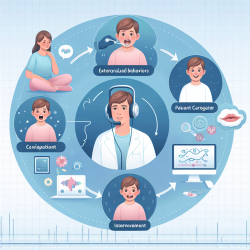Introduction
The recent study titled "Demographic, social, and behavioral correlates of SARS-CoV-2 seropositivity in a representative, population-based study of Minnesota residents" provides valuable insights into the factors influencing COVID-19 seropositivity. This research, conducted prior to vaccine availability, highlights the demographic, social, and behavioral factors associated with seropositivity, offering crucial data for practitioners aiming to improve outcomes through informed decision-making.
Key Findings and Implications for Practice
The study's results underscore several critical associations:
- Age and Seropositivity: Individuals aged 23–64 and those 65+ were more likely to test positive for SARS-CoV-2 antibodies compared to the 18–22 age group. This suggests that age is a significant risk factor, and practitioners should consider age-specific strategies in their interventions.
- Income Levels: Higher income groups exhibited lower odds of seropositivity compared to those earning less than $30,000 annually. This finding highlights the socio-economic disparities in COVID-19 risk, emphasizing the need for targeted support for lower-income populations.
- Mitigation Behaviors: Engaging in ten or more COVID-19 mitigation behaviors, such as handwashing and mask-wearing, was associated with lower odds of seropositivity. Practitioners can use this data to advocate for comprehensive public health campaigns promoting these behaviors.
- Household Composition: The presence of school-aged children (6-17 years) in the household was linked to higher seropositivity odds, suggesting that children may play a role in virus transmission. This finding could inform policies on school testing and family health interventions.
Encouraging Further Research
While the study provides robust data, it also opens avenues for further research. Practitioners are encouraged to explore:
- Longitudinal Studies: Investigating the long-term effects of COVID-19 on different demographic groups can provide deeper insights into persistent health disparities.
- Behavioral Interventions: Developing and testing interventions that increase adherence to mitigation behaviors can help reduce seropositivity rates.
- Impact of School-Aged Children: Further research is needed to understand the role of children in virus transmission and how school policies can mitigate this risk.
Conclusion
This study provides a data-driven foundation for practitioners to enhance their strategies and interventions. By understanding the factors associated with seropositivity, practitioners can better tailor their approaches to mitigate risks and improve outcomes for children and families.
To read the original research paper, please follow this link: Demographic, social, and behavioral correlates of SARS-CoV-2 seropositivity in a representative, population-based study of Minnesota residents.










